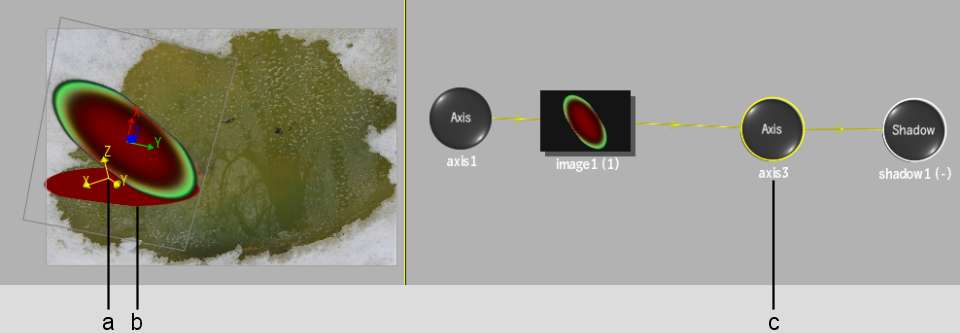The relationship between objects is referred to as a parent-to-child relationship. When you add certain objects to the scene, a parent-to-child relationship is created automatically. For example, when you add a surface in Action, it is automatically parented by an axis. You can also manually connect nodes to create and change relationships between objects. You can create complex animations where movements applied to a parent node are passed down to all connecting child objects.
You can use Parent mode to create and change the parent-to-child relationship between nodes. Alternatively, if Auto Parent is enabled in the Setup menu (of Action, Batch, and Modular Keyer), you can also use Move mode to parent nodes.






A line is drawn connecting the nodes. The direction of the arrow indicates the parent-to-child relationship. Any changes made to an object will be passed down to all connecting child objects.
In the following Action scene-based schematic, the selected node (axis3) is the parent of shadow1. Changes made to axis3 are passed down to its child node—shadow1.



(a) Axis of shadow corresponds to axis3 node (b) Shadow corresponds to shadow1 node (c) axis3—the parent of shadow1—is used to change the shadow’s position
To insert a node between connected nodes: